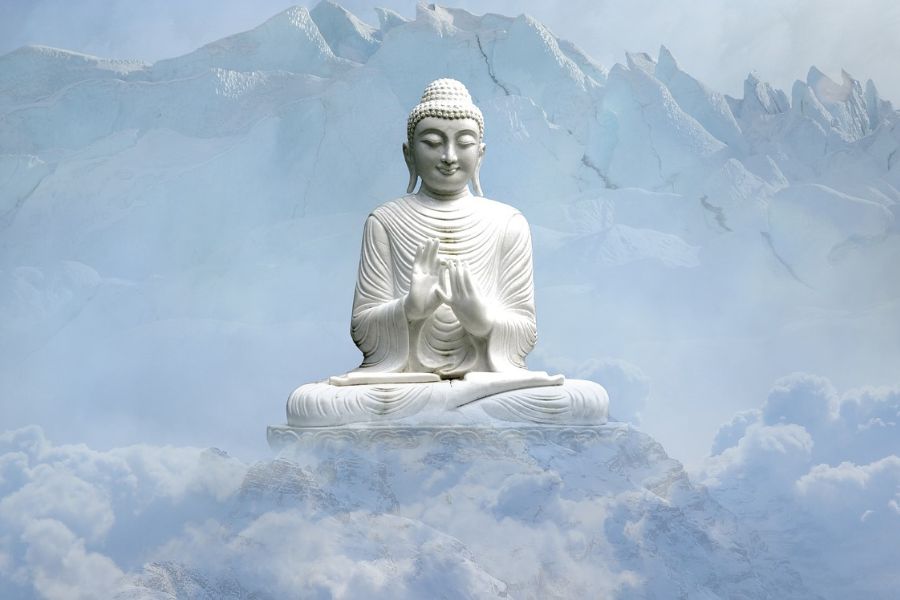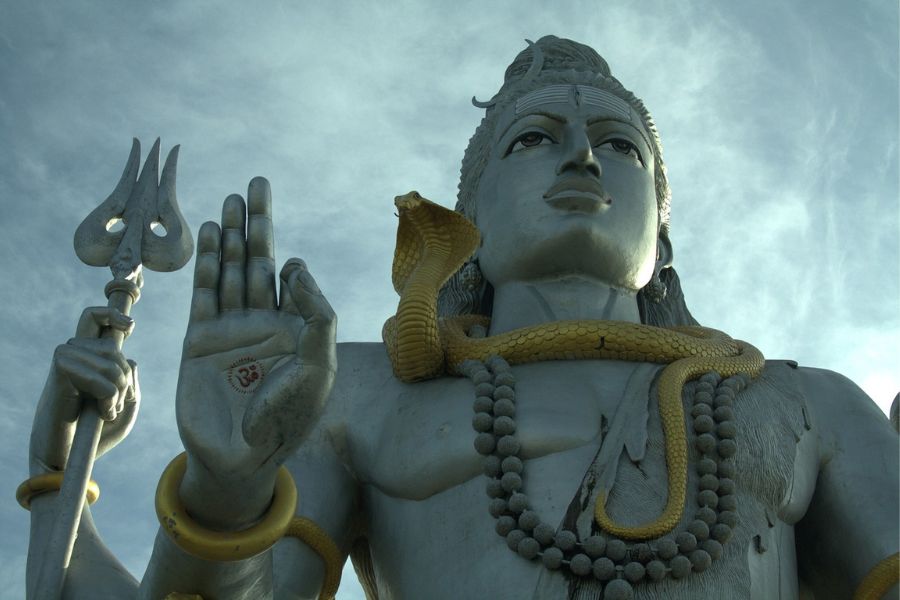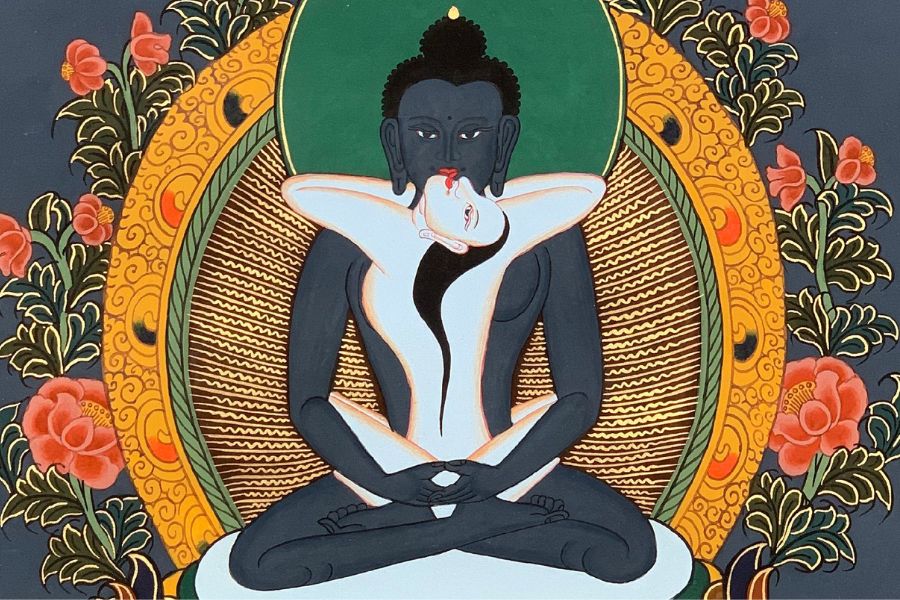The Doctrine of Emptiness, Shunyatá in Sanskrit, is described in the vast literature of the Prajna-Paramita, the highest and most exalted of the Six Paramitas.
The material of the Prajna-Paramita is deeply esoteric and consists of teachings of the Buddha given on the Vulture Peak to his principal disciples and superhuman listeners such as devas, etc.
The Great Master Nagarjuna, who lived about five hundred years after the Buddha's earthly manifestation, was the first to publicly announce the doctrines concerning Emptiness. According to Nagarjuna, it was the Buddha Sakyamuni himself who composed and entrusted these teachings to the guardianship of the Nagas (Serpents of Wisdom), who concealed them in the depths of a great lake or sea until humanity was ready to understand them.
The Doctrine of Shunyatá implies that True Knowledge is only accessible to an enlightened mind, free from ignorance and illusion, and that transcends the world of representations and appearances. The Prajna-Paramita is considered "the Mother of the Bodhisattvas" as it gives birth to them and perfects them. It is thus associated with Divine Shakti and the serpentine power of Mother Kundalini.
Regarding the superiority of the Prajna-Paramita, a Tibetan manuscript says: "If a Bodhisattva practices intensively all Five Paramitas, namely, Dána Paramitá (unlimited charity), Shila Paramitá (unlimited morality), Kshanti Paramitá (unlimited patience), Virya Paramitá (unlimited diligence), and Dhyana Paramitá (unlimited meditation), and does not practice the Sixth, the Prajna-Paramita, they will be unable to attain Total Knowledge"... However, the text states that the other Five are necessary to prepare the ground for the Sixth, and the Sixth comes to liberate the Bodhisattva from attachment to the other Five.
According to the Prajna-Paramita, however, Liberation must be attained with the sole purpose of walking the superior path, the sublime Path of the Bodhisattva. Asanga says about this: "Through supreme mastery, he attained understanding and took back control of the world, from which he had been liberated. His only joy is to seek the liberation of beings. He walks through existence like a lion."
Next, we present the Essence of the Prajna-Paramita. This small Tibetan text is an abbreviated summary of the teachings of the Prajna-Paramita. The Conqueror, the Essence of Transcendental Wisdom (In the language of India, "Bhagavati Prajna-Paramita Hridaya")
Thus I have heard: Once, the Conqueror, amidst the great congregation of the Sangha, on the Vulture Peak, was sitting, absorbed in a Samadhi called Deep Illumination.
At the same time, the Bodhisattva, the Great Being (Maha-Sattva), Arya Avalokiteshvara, set out to meditate on the profound doctrine of the Prajna-Paramita, understanding that the five aggregates are of the nature of Emptiness. Then, inspired by the power of the Buddha, the venerable Shariputra turned to the Bodhisattva Avalokiteshvara and asked:
How can a devotee, wishing to practice the deep teachings of the Prajna-Paramita, understand them?
Upon hearing the question, the Bodhisattva, the Great Being, Arya Avalokiteshvara, formulated an answer.
Shariputra, any devotee, son, or daughter wishing to practice the deep teachings of the Prajna-Paramita must practice in the following ways:
- The Five Aggregates must be understood as being naturally and entirely Emptiness.
- Forms are Emptiness, and Emptiness is Forms; neither Forms nor Emptiness are separable, nor are Forms different from Emptiness.
- Similarly, Perception, Feeling, Will, and Consciousness are Emptiness.
Thus, Shariputra, all things are Emptiness, without characteristics, unborn, without obstructions, pure, spotless, endless, and unfulfilled. Therefore, Shariputra, Emptiness has no form, no perception, no feeling, no volition, no consciousness, no eye, no ear, no nose, no tongue, no body, no mind, no form, no smell, no sound, no taste, no touch, no quality.
Where there is no eye, there is no desire, and so on, until "there is no consciousness of desire."
There is no ignorance, there is no cessation of ignorance, and so on, until there is no decay and no death, and no cessation of decay and death. Likewise, there is no sorrow, no evil, no obstruction, no Path, no Wisdom, nor any achievement or failure.
Shariputra, therefore, even the Bodhisattvas have nothing to attain, trusting in the Prajna-Paramita and dwelling within it, there is no mental obscuration (of Truth), and therefore, there is no fear. Surpassing vastly the erroneous paths or doctrines, they successfully attain liberation. Thus, all Buddhas have attained the supreme, pure, and perfect Buddha State depending on this Prajna-Paramita.
And now we pronounce the Mantra of the Prajna-Paramita, the Mantra of the Great Logic, the supreme Mantra, the Mantra that makes one equal to That which cannot be equaled, the Mantra that soothes all sorrow and, not being false, is known as true, the Mantra of the Prajna-Paramita.
GATE GATE PARAGATE PARASAMGATE BODHI SWAHA
Shariputra, a Bodhisattva should understand the Prajna-Paramita in this way. Then the Conqueror (the Buddha) awoke from his Samadhi and said to the Bodhisattva Avalokiteshvara: "Well done, well done. It is as you have shown. This is how the Prajna-Paramita should be understood. The Tathagatas are also pleased with this."
Thus, having pronounced his mandate, the Conqueror, Shariputra, the Bodhisattva Avalokiteshvara, and all beings gathered there, devas, humans, and the entire world, rejoiced and praised the words of the Conqueror. This completes the Essence of the Wonderful Transcendental Wisdom.




















